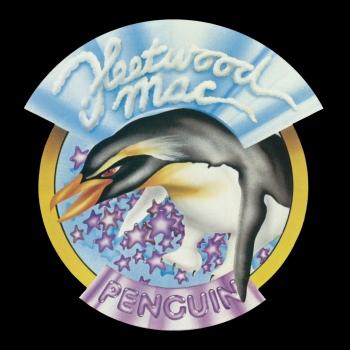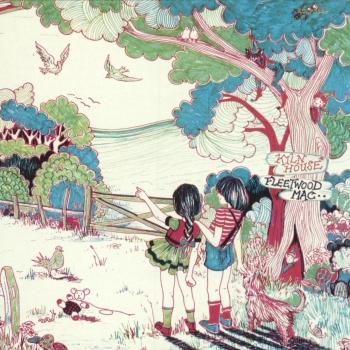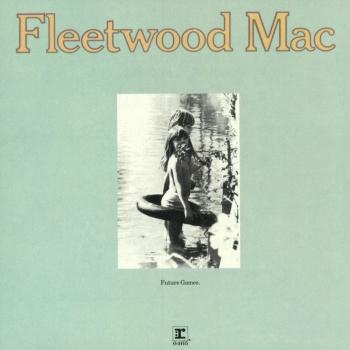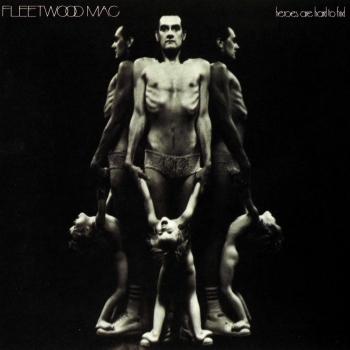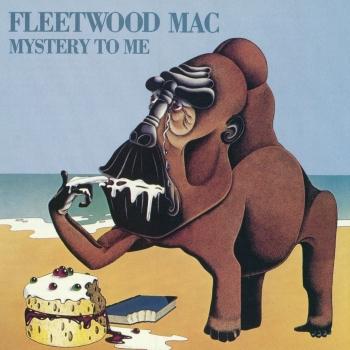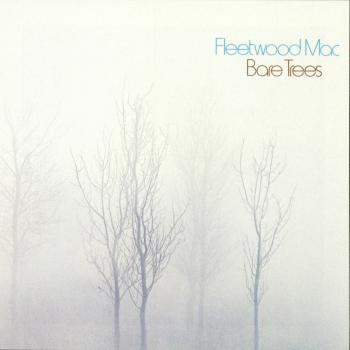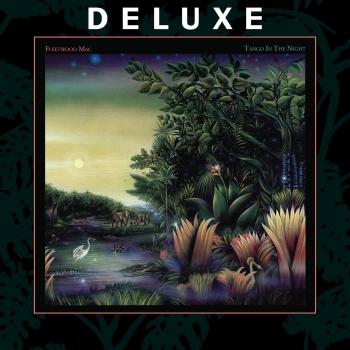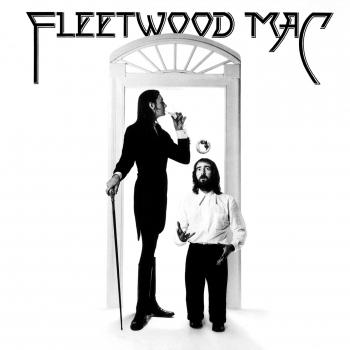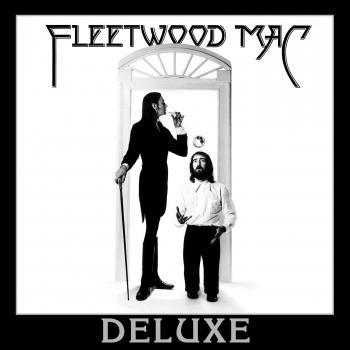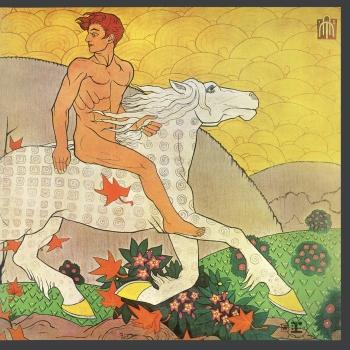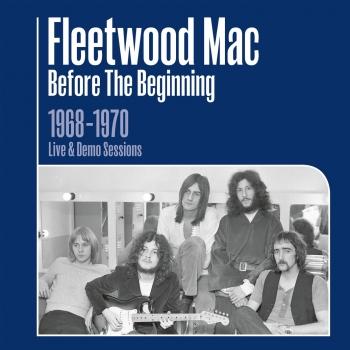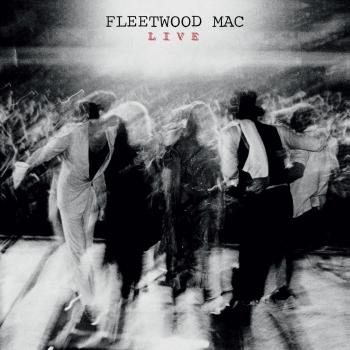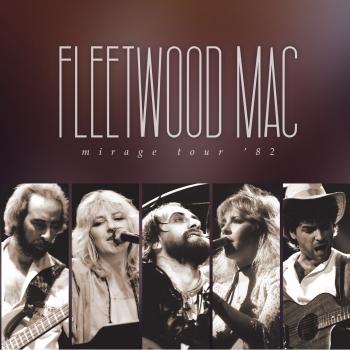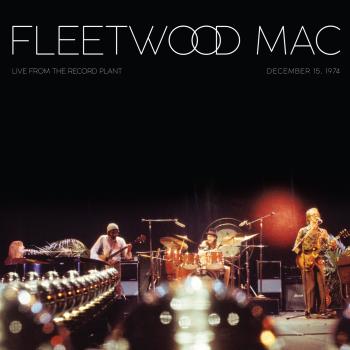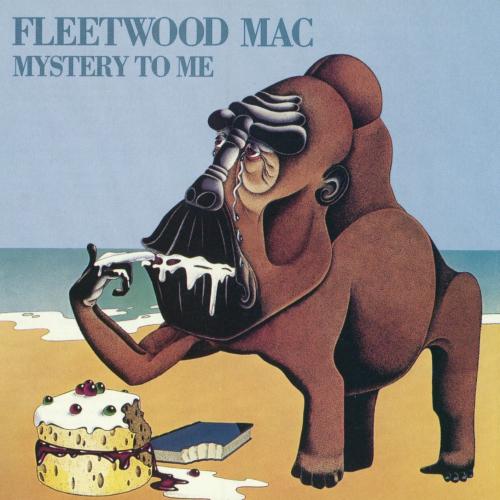
Mystery To Me (Remastered) Fleetwood Mac
Album Info
Album Veröffentlichung:
1973
HRA-Veröffentlichung:
31.03.2017
Label: Rhino/Warner Bros., Rhino Records
Genre: Rock
Subgenre: Classic Rock
Interpret: Fleetwood Mac
Das Album enthält Albumcover
Entschuldigen Sie bitte!
Sehr geehrter HIGHRESAUDIO Besucher,
leider kann das Album zurzeit aufgrund von Länder- und Lizenzbeschränkungen nicht gekauft werden oder uns liegt der offizielle Veröffentlichungstermin für Ihr Land noch nicht vor. Wir aktualisieren unsere Veröffentlichungstermine ein- bis zweimal die Woche. Bitte schauen Sie ab und zu mal wieder rein.
Wir empfehlen Ihnen das Album auf Ihre Merkliste zu setzen.
Wir bedanken uns für Ihr Verständnis und Ihre Geduld.
Ihr, HIGHRESAUDIO
- 1 Emerald Eyes 03:34
- 2 Believe Me 04:11
- 3 Just Crazy Love 03:27
- 4 Hypnotized 04:49
- 5 Forever 04:07
- 6 Keep Going On 04:05
- 7 The City 03:36
- 8 Miles Away 03:50
- 9 Somebody 05:03
- 10 The Way I Feel 02:42
- 11 For Your Love 03:45
- 12 Why 04:54
Info zu Mystery To Me (Remastered)
Released in 1973 and now regarded as an important transitional album in Fleetwood Mac's long march towards superstardom, „Mystery To Me“ featured the lineup of Mick Fleetwood, John and Christine McVie, singer/guitarist Bob Welch and guitarist Bob Weston. The hiring of Welch had angered original guitarist Danny Kirwan and after a 1972 gig, the volatile Kirwan went berserk backstage and was fired. On „Mystery To Me“, the follow-up to „Penguin“ (1973) and the band's strongest album in years, the luminous elements of the future Fleetwood Mac were falling in place; Bob Welch's rambling, mystical reverie "Hypnotized" became (and remains to this day) a rock radio standard.
The Welch-Weston-John McVie-penned "Forever" grooves with an atypical African gloss, and the bluesy growl of Welch's "The City" lashes out at New York, contradicting Lindsey Buckingham's giddy city ode "Empire State" on 1982's MIRAGE. Yet it is Christine McVie's thoughtful, majestic "Why," which unfolds from a backcountry fingerpick to a soaring poem of regret and passage, that marks the transition from early Mac (which officially ended with 1974's Heros Are Hard To Find“) to one of the most influential Anglo-American bands of all time.
„At this point, the band was best-known as a British blues unit. Slowly but surely the band was becoming more acclimated with a production style that was reminiscent of the California pop sound. With the majority of the blues and psychedelic behind them, Mystery to Me finds Fleetwood Mac in a more ruminative vein. American guitarist Bob Welch established that path. Despite the all-encompassing ethos, Welch's songwriting skills made him walk a fine line between the mystical and the silly. But luckily most everything works here. The leadoff song, the laid-back "Emerald Eyes" matches Welch's spacey lyrics and vocals as Christine McVie provides great backing help. The album's best track, the gorgeous and lyrically strong "Hypnotized" has Welch matching an effortless, soothing croon with jazzy guitar riffs. Throughout Mystery to Me the amazing and almost telepathic drums and bass of Mick Fleetwood and John McVie give this effort more panache and muscle than was represented on this effort's predecessor, Bare Trees. The best Bob Welch offering, "Keep on Going," has a strong, soulful string arrangement and Christine McVie's customary sensual and poised vocals. The only weak spot is the ill-advised cover of "For Your Love" that's steeped in hackneyed, post-psychedelic style. Mystery to Me's interesting sound is directly attributed to the fact that it was recorded on the Rolling Stones Mobile Unit. This effort is custom-made for those who like thoughtful offerings and is a valuable set in the scheme of the band.“ (Jason Elias, AMG)
Bob Welch, electric guitar, acoustic guitar, bass, lead and backing vocals
Bob Weston, electric guitar, slide guitar, acoustic guitar, backing vocals
Christine McVie, keyboards, lead and backing vocals
John McVie, bass
Mick Fleetwood, drums, percussion
Recorded Spring-Summer 1973 at Rolling Stones Mobile Studio
Produced by Fleetwood Mac & Martin Birch
Digitally remastered
Fleetwood Mac
The Fleetwood Mac story is an episodic saga that spans more than 30 years. It is the saga of a British blues band formed in 1967 that became a California-based pop group in the mid-Seventies. In between came a period where Fleetwood Mac shuffled personnel and experimented with styles, all the while releasing solid albums that found a loyal core audience. Despite all the changes, two members have remained constant over the years: drummer Mick Fleetwood and bassist John McVie, whose surnames provided the group name Fleetwood Mac. Though most rock fans are familiar with the lineup that includes Lindsey Buckingham and Stevie Nicks-by far the longest-running edition of the band, responsible for the classic albums Fleetwood Mac and Rumours-the group possesses a rich and storied history that predates those epics. Earlier Fleetwood Mac lineups included guitarists Peter Green, Jeremy Spencer, Danny Kirwan and Bob Welch. Fleetwood Mac when Green, Fleetwood and McVie, who were all expatriates from British bandleader John Mayall’s Bluesbreakers, decided to form a band. McVie and Fleetwood had been playing with Mayall, a British blues legend, since 1963 and 1965, respectively, while Green replaced Eric Clapton (who exited to form Cream) in 1966. Initially a quartet, the original Fleetwood Mac also included guitarist Jeremy Spencer and then expanded with the addition of Danny Kirwan prior to their second album. Not surprisingly, the group’s first two U.K. albums-Fleetwood Mac (1967) and Mr. Wonderful (1967)-were heavily blues-oriented. “Black Magic Woman,” a Peter Green song from the latter album, later became a major hit for Santana. In 1969, Fleetwood Mac recorded at Chess studios with American blues musicians, including Willie Dixon and Otis Span; it was released as the two-volume Blues Jam in the U.K. and as Fleetwood Mac in Chicago in the U.S. By decade’s end, however, Fleetwood Mac had begun moving from traditional blues to a more progressive approach. Around this time, the group adopted its distinctive “penguin” logo, based on zoo-lover and amateur photographer McVie’s interest in the birds. There are arguably three “definitive” Fleetwood Mac lineups. One of them is the blues-oriented band of the late Sixties, which arrayed three guitarists (Green, Spencer and Kirwan) around the rhythm section of Fleetwood and McVie. They are best represented by 1969’s Then Play On, a milestone in progressive blues-rock. After Green’s exodus in mid-1970, the remaining members cut the more easygoing, rock and roll-oriented Kiln House. Early in 1971, a born-again Spencer abruptly left the band during a U.S. tour to join the Children of God. The second key configuration found Fleetwood, McVie and Kirwan joined by keyboardist Christine McVie (born Christine Perfect, she’d married bassist McVie) and guitarist Bob Welch, a Southern Californian who became the group’s first American member and a harbinger of new directions. This configuration produced a pair of ethereal pop masterpieces, Future Games (1971) and Bare Trees (1972). Kirwan, who was having personal problems, was asked to leave in August 1972. The remaining foursome, joined by new recruits Dave Walker (vocals) and Bob Weston, recorded Penguin (1973); sans Walker, they cut Mystery to Me (1974). Again reduced to a quartet with Weston’s departure, they released Heroes Are Hard to Find later that same year. Finally, the platinum edition of Fleetwood Mac came together in 1975 with the recruitment of Lindsey Buckingham and Stevie Nicks. The San Francisco duo had previously cut an album together as Buckingham-Nicks. Drummer Fleetwood heard a tape of theirs at a studio he was auditioning, and the pair were drafted into the group without so much as a formal audition. This lineup proved far and away to be Fleetwood Mac’s most durable and successful. In addition to the most solid rhythm section in rock, this classic lineup contained strong vocalists and songwriters in Buckingham, Nicks and Christine McVie. Male and female points of view were offered with unusual candor on the watershed albums Fleetwood Mac (1975) and Rumours (1977). Fleetwood Mac introduced the revitalized group with such sparkling tracks as “Over My Head,” Fleetwood Mac’s first-ever Top Forty single; “Rhiannon,” which became Nicks’ signature song; “Say You Love Me,” which showed of the group’s three-part harmonies; and “Monday Morning,” the driving album opener and FM-radio favorite. Rumours was written and recorded as three long-term relationships-between Buckingham and Nicks, the married McVies, and Fleetwood and his wife-publicly unraveled. The album is a virtual document of romantic turmoil, and its timing reflected the interpersonal upheavals of the liberated Seventies. Resonating with a mass audience like no other album in rock history, Rumours yielded a bumper crop of songs with enduring appeal, among them the Top Ten hits “Go Your Own Way,” “Dreams,” “Don’t Stop” and “You Make Loving Fun.” Fleetwood Mac toured for seven months behind Rumours and reigned as the most popular group in the world. Rumours has to date sold 18 million copies, making it the fifth best-selling album of all time. As a group, Fleetwood Mac has sold more than 70 million albums since its inception in 1967. Under the creative guidance of Lindsey Buckingham, whose skill as a producer and pop visionary became increasingly evident-Fleetwood Mac grew more emboldened with the double album Tusk, released in 1979. A more experimental album, Tusk didn’t match its predecessors sales, but it did earn two more Top Ten hits-"Sara" and “Tusk"-while extending the group’s longevity by forswearing formulas. Solo careers commenced during the three-year layoff that followed another extensive tour. Stevie Nicks, in particular, nurtured a career that rivaled Fleetwood Mac’s for popularity. Fleetwood Mac released two studio albums in the Eighties-Mirage (1982) and Tango in the Night (1987)-but its front-line members were increasingly drawn to their solo careers. Disinclined to tour, Buckingham announced he was leaving Fleetwood Mac shortly after Tango in the Night. He was replaced by guitarists Billy Burnette and Rick Vito, who appeared on the 1990 album Behind the Mask. Eventually, both Nicks and Christine McVie revealed they, too, would no longer tour with Fleetwood Mac. Nicks officially left the band a month after Fleetwood Mac regrouped to perform “Don’t Stop” at President Bill Clinton’s inauguration in January 1993. The indefatigable core of Fleetwood and the McVies recruited guitarist Dave Mason and singer Bekka Bramlett, but the proverbial link in Fleetwood Mac’s chain had been broken one too many times and this lineup’s one album, Time (1995), fared poorly. Then, in 1997, Fleetwood Mac’s classic lineup set aside their differences for a reunion that marked the 30th anniversary of the original group’s founding and the 20th anniversary of Rumours’ release. A concert was filmed for an MTV special and saw release on video and audio formats as The Dance, which found the group revisiting old material and premiering new songs. A full-fledged reunion tour followed.
Dieses Album enthält kein Booklet











